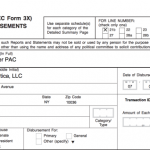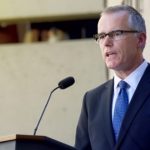4 Things Private Businesses Can Do To Lessen The Impact Of Trump’s Climate Decision
President Trump’s decision to pull out of the Paris climate agreement last week makes the U.S. one of just three countries the world over—the other two being Syria and Nicaragua—to opt out of the 31-page pact to take steps to reduce the effects of climate change. His decision puts the onus ion state governments and the private sector to bridge the gap and take action on climate change.
“In the U.S., emission levels are determined far more by cities, states, and businesses than they are by our federal government,” he said. “Over the past decade, the U.S. has led the world in emission reductions—and our federal government had very little to do with it. It happened because of leadership from cities, public opposition to coal plants, and market forces that have made cleaner sources of energy—including solar and wind—cheaper than coal.”
Here are some of the ways in which companies and business leaders can stay the course, with or without the support of the powers that be.
Disengage—Or Stay Engaged And Be Vocal
Following Trump’s decision to withdraw from the climate deal, Elon Musk has stepped down from the president’s advisory council, as has Disney CEO Bob Iger. Still remaining, however, are the likes of Pepsi CEO Indra Nooyi, General Motors CEO Mary Barra, and IBM CEO Ginni Rometty. “There’s going to be a groundswell of pressure on CEOs to step down from that advisory council,” Oxfam climate and energy director Heather Coleman says. “This decision is a pivot point.”
Coleman also noted that the private sector is often “beat up” as conscientious consumers pin their hopes on businesses when the government is ineffective. “There’s a lot of anger that people feel toward the U.S. government, and toward it not taking action, that is being displaced and put on the [private sector],” Coleman says. “And so these companies understand that the more the U.S. government stalls on this issue, the more pressure they’re going to get.”
Many business leaders have already been vocal about their feelings: Thirty CEOs—including the leadership of unlikely corporate allies like JP Morgan Chase and Morgan Stanley—expressed their support of the Paris climate deal in the form of a letter last month. Others, like Exxon CEO Darren Woods, personally implored Trump not to withdraw from the climate deal. Since last week’s decision, countless CEOs have come forward to denounce Trump’s decision.
Kevin Moss, the director of the World Resources Institute’s (WRI) Business Center—which works with the private sector to develop sustainability strategies—says that while it’s important for CEOs to show disagreement by choosing to no longer engage with Trump, as Musk and Iger have, there can be value in sticking around if you are vocal. “The one thing that’s not helpful is when companies stay engaged and stay quiet,” he says. “The important thing to do is make a statement by disengaging, or make a statement by staying inside and engaging and being forthright.”
Set Science-Based Targets
Addressing climate change is critical for the planet, yes, but it’s also good for business. “From the perspective of a business, the fundamentals remain the same,” Moss said. “Acting on climate change reduces costs and risks in a couple of different ways, and acting on climate change creates business opportunity.”
What some companies are already doing is setting emission reduction targets grounded in science, with the objective of keeping the rise in global temperature to below two degrees Celsius higher than in pre-industrial times. The initiative—a partnership between WRI, CDP, the World Wide Fund for Nature, and the United Nations Global Compact—already boasts 269 companies, with two to three new companies signing up each week, according to Moss.
As we’ve written before, companies often set reduction goals that don’t take into account actual science, which means they may not be doing as much as they think they are. With science-based targets, Coleman says, companies are not “arbitrarily making greenhouse gas reduction goals,” but instead are making an informed decision based on “how does this actually add up to the broader whole.”
Nigel Topping, the CEO of the We Mean Business coalition, said that nearly 600 companies boasting more than $8.1 trillion in annual revenue have committed to climate action as part of a We Mean Business campaign. Included in that count is Walmart, which saved $1 billion in the last fiscal year by implementing a science-based target (Walmart’s CEO Doug McMillon has decided to remain on Trump’s advisory council). And last week, Topping says, HPEnterprise became the first company to introduce a science-based supply chain goal; its target is to cut back on carbon emissions by 100 million metric tons of carbon by 2025—the equivalent of eliminating 21 million cars from the road for a full year.
Mark Barteau, the director of the University of Michigan’s energy institute, notes that this type of accountability will be crucial if companies want to reach the goals laid out in the Paris agreement. “If they’re really committed to trying to meet the Paris numbers on their own, I think having independent validation that they’re doing that is going to be important—otherwise it’s just going to look like the usual corporate propaganda and greenwashing,” he says.
Introduce Carbon Pricing
One way to incentivize the adoption of renewable energy sources—particularly when there’s little support from the government—is by imposing a carbon tax of sorts, or charging companies for the emission of CO2.
“In many industries, there’s been a conversation happening for awhile on whether or not there’s going to be a price on carbon,” Coleman says. “Some companies have established an internal price on carbon in anticipation of regulatory action.” But as Coleman points out, the companies that are likely to do this are those in the geographic areas where carbon pricing might be imposed on a state level.
As Barteau points out, if energy payback is a concern—that is, how long it takes to get a return on the initial energy investment— carbon pricing can help paint a clearer picture of energy efficiency. “That’s a fairly simple way to evaluate or take account of the carbon emissions, the carbon footprint impact, without redoing the whole way investment decisions are made,” he says.
Make Sure Consumers Hear You
Perhaps one of the most important things businesses can do is to ensure customers and employees understand the value of acting on climate change, and that it does not take away from their livelihood.
“Many present a false choice between jobs and doing the right thing for the environment,” says Patrick Maloney, founder and CEO of smart home and clean energy company Inspire. “But the solar and wind industries are each creating jobs at a rate 12 times faster than that of the rest of the U.S. economy, and the solar industry today is responsible for more than twice as many jobs as the coal industry.”
As Stephen Comello, Stanford’s Sustainable Energy Initiative director, points out, coal isn’t going to make a big comeback as a result of Trump’s decision. “What is eating the lunch of coal?” he says. “It’s natural gas. It’s cheap, it’s more efficient, it’s easier to move around . . . That’s not going to change.” In fact, according to a CBS news news report, two U.S. coal companies opted for staying in the Paris Accord with the hopes that it would foster U.S. coal sales to emerging markets that still want the fuel.
Either way, Comello says it’s unlikely that coal will make a comeback. “Carbon capture and sequestration is a pretty promising technology, but it’s been a promising technology for years,” he says. “The capital costs involved are so high. If you really were prudent about your dollars, as either a business or a government, you wouldn’t really invest in carbon capture because it is so costly. It isn’t proven. Why, if I had a billion dollars would I put that at risk to do an R&D project with carbon capture, versus actually deploying solar and wind, which is already approved technology at scale?”
In his statement, Bloomberg pledged to uphold the objectives of the climate deal, regardless of the withdrawal, even committing $15 million to the U.N. Framework Convention on Climate Change, which will go toward helping other countries meet the terms of the agreement. With so many leaders and businesses speaking out, chances are consumers will hear the message loud and clear—even if the White House refuses to.
Greenwashing business as usual isn’t enough. Here are practical steps that business leaders can take to bridge the gap and take climate action.
President Trump’s decision to pull out of the Paris climate agreement last week makes the U.S. one of just three countries the world over—the other two being Syria and Nicaragua—to opt out of the 31-page pact to take steps to reduce the effects of climate change. His decision puts the onus ion state governments and the private sector to bridge the gap and take action on climate change.
Fast Company , Read Full Story
(87)














